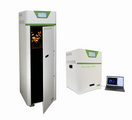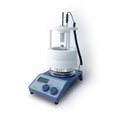由于要经历漫长的炎热夏季以及未来全球变暖的预期,植物热胁迫成为科学界普遍关注的课题。已经使用许多不同类型的测量来研究植物热胁迫,包括NPQ,Fv / Fm,OJIP和量子光合产量Y(II)的叶绿素荧光测量。 本应用指南讨论了哪些协议是最有效,最快和最容易测量的。
NPQ:
尽管NPQ可用于测量热胁迫(Schreiber U.2004),(Tang Y.,Wen X.,Lu Q.Yang Z.,Cheng Z.,&Lu C. 2007)(Haldiman P,&Feller U 。2004),这是一个耗时的测量,需要非常细致。在田间推荐的暗??适应时间范围为8到12小时,或者整晚。在实验室推荐的暗适应时间范围为12到24小时不等。 (Maxwell and Johnson 2000)。在田间,NPQ不会在一夜之间完全弛豫,因为从光抑制恢复需要长达六十个小时(Lichtenthaler 2004)。因此,总有一些残余NPQ未被测量和接受。用于测量NPQ的标准是Fv / Fm中的Fm的高度(Baker 2008)。因此,仅比较具有相同或非常相似的Fv / Fm值的样品是极其重要的。否则,就会像对用不同的非标准尺寸的标尺的测量进行比较。除了长时间的暗适应时间之外,NPQ还必须在叶片达到稳态光合作用后才能测量,稳态光合作用通常使用人造光源,在稳定光照水平下,需要15到20分钟的时间(Maxwell和Johnson 2000)。NPQ可以在约35℃和更高温度检测热胁迫(Haldiman P,&Feller U.2004)。 NPQ饱和脉冲图是研究植物从热胁迫恢复的好方法,因为NPQ随着时间的推移而减少,量子光合产量增加(Schreiber U.2004)。
上图描绘了热胁迫的恢复。将样品加热到35℃,5分钟,在20℃时发生恢复
Fv/Fm和OJIP:
可以通过暗适应,对Fv/Fm和OJIP进行更快速地测量;然而,研究表明它们对热胁迫测量的价值非常有限。 暗适应时间通常从二十分钟到整夜或黎明前。 对已发表文献的一项调查表明,Fv / Fm只能检测约45℃时的热胁迫(Haldiman P,&Feller U. 2004),(Crafts-Brander and Law 2000),OJIP只能检测到约44℃或更高温度的热胁迫(Strasser 2004)。
量子光合产量(△F/Fm’):
最后,也可能是最好的选择是使用量子光合产量(△F / Fm')来检测和测量热胁迫。△F / Fm'是一种在稳态光合作用或者在长达15至20分钟没有改变的光水平下进行的光适应测量((Maxwell and Johnson2000)。但是,由于大多数研究人员使用环境光,叶片通常处于稳定状态而无需额外的等待。测量只需两到五秒钟,而且可以在短时间内测试大量的叶子,△F / Fm'随着光水平的变化而变化,所以控制比较的样本的光照水平,或者用PAR叶夹测量光水平,并且将具有相似光水平的样品进行比较是很重要的。晴间多云的天气可能会导致在田间测量出现问题,因为稳态光合作用并不能一直保持。另外,在田间测量冠层顶部的叶子是很常见的,因为太阳斑点和由风引起的植被移动,阻止叶子达到稳态光合作用。文献显示△F / Fm'在约35℃或更高温度检测热胁迫(Haldiman P,&Feller U. 2004),(Dascaliuc A.,Ralea t.,Cuza P. 2007)。这种测量在几秒钟内提供NPQ对热胁迫的敏感性。
△F / Fm'可用于更先进的叶绿素荧光仪,如Opti-Sciences型号; OS5p 和OS1p。 NPQ最好由OS5p处理,因为它具有非常稳定的光化光源来驱动光合作用。 为了进行比较,发现CO2气体交换可以检测和测量约30℃的热胁迫(Haldiman P,&Feller U. 2004)。 对于那些希望同时使用气体交换和叶绿素荧光的人来说,可以使用OS5p结合ADC LCpro CO2气体交换系统进行荧光和CO2气体交换组合测量。
我们提供以下主题的其他应用快讯:
♦量子光合产量-其意义如何及其限制
♦暗适应-多长时间为足够长
♦PAR测量和ETR-其意义如何及其限制
♦淬灭测量-其意义如何,目前的测量评估以及限制
♦早期水胁迫测量
♦氮胁迫测量
♦状态转换如何影响荧光测量
♦快速光曲线-其如何使用及其限制
♦光曲线-其如何使用及其意义如何。
参考文献:
Baker N.R, (2008) “Chlorophyll Fluorescence: A Probe of Photosynthesis In Vivo” Annu. Rev. Plant Biol.2008. 59:89–113
Crafts-Brandner S. J., Law R.D. (2000) Effects of heat stress on the inhibition and recovery of ribulase-1, 5-biphsphate carboxylase/ oxygenase activation state. Planta (2000) 212: 67-74
Dascaliuc A., Ralea t., Cuza P., (2007) Influence of heat shock on chlorophyll fluorescence of white oak
(Quercus pubescens Willd.) leaves. Photosynthetica 45 (3): 469-471, 2007
Haldimann P, & Feller U. (2004) Inhibition of photosynthesis by high temperature in oak
(Quercus pubescens L.) leaves grown under natural conditions closely correlates with a reversible heat
dependent reduction of the activation state of ribulose-1,5-bisphosphate carboxylase/oxygenase.
Lichtenthaler H. K., Burkart S., (1999) Photosynthesis and high light stress. Bulg. J. Plant Physiol., 1999,25(3-4), 3-16
Lichtenthaler H. K., Babani F. (2004) Light Adaption and Senescence of the Photosynthetic Apparatus.
Changes in Pigment Composition, Chlorophyll Fluorescence Parameters and Photosynthetic Activity. From Chapter 28, “Chlorophyll a Fluorescence a Signature of Photosynthesis”, edited by George Papaqeorgiou and Govindjee, published by Springer 2004, PO Box 17, 3300 AA Dordrecht, The Netherlands, page 716
Maxwell K., Johnson G. N, (2000) Chlorophyll fluorescence – a practical guide. Journal of Experimental
Botany Vol. 51, No. 345, pp. 659-668- April 2000
Schreiber U, (2004)Pulse-Amplitude-Modulation (PAM) Fluorometry and Saturation Pulse Method: An
Overview From Chapter 11, “Chlorophyll a Fluorescence a Signature of Photosynthesis”, edited by George Papaqeorgiou and Govindjee, published by Springer 2004, PO Box 17, 3300 AA Dordrecht, The Netherlands, page 279-319
Strasser R.J, Tsimilli-Michael M., and Srivastava A. (2004) - Analysis of Chlorophyll a Fluorescence
Transient. From Chapter 12, “Chlorophyll a Fluorescence a Signature of Photosynthesis”, edited by George Papaqeorgiou and Govindjee, published by Springer 2004, PO Box 17, 3300 AA Dordrecht, The Netherlands, page 340
Tang Y., Wen X., Lu Q., Yang Z., Cheng Z., Lu C., (2007) Heat stress induces an aggregation of the light-harvesting complex of photosystem II in spinach plants. Plant Physiology, Feb. 2007 Vol. 143, pp629-638




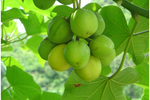

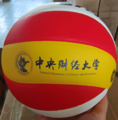

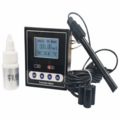
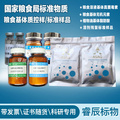
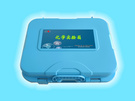
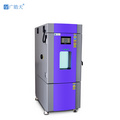
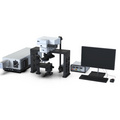
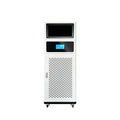
![聚酰胺粉 [柱层析用,高分离性能] 60-100目/80-120目/100-200目](https://p-06.caigou.com.cn/135x120/2024/7/2024071513085253637.jpg)
